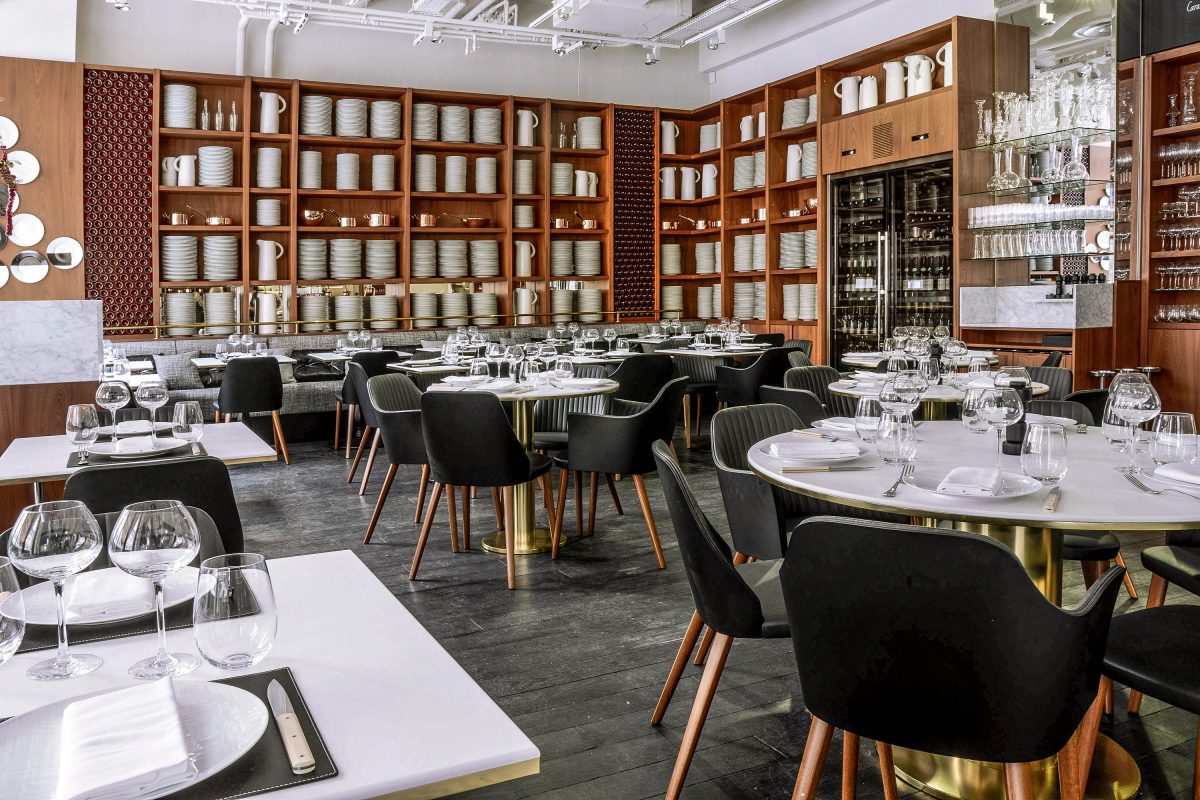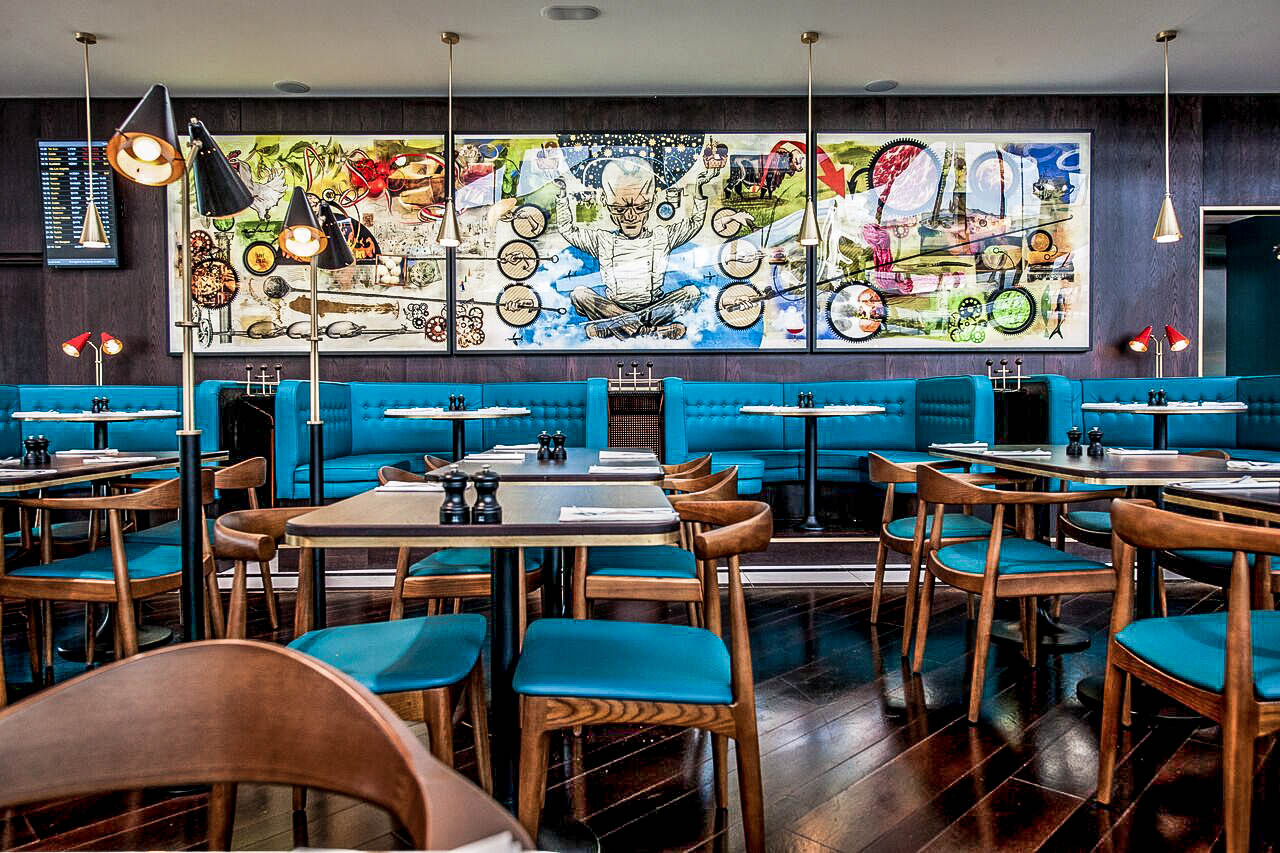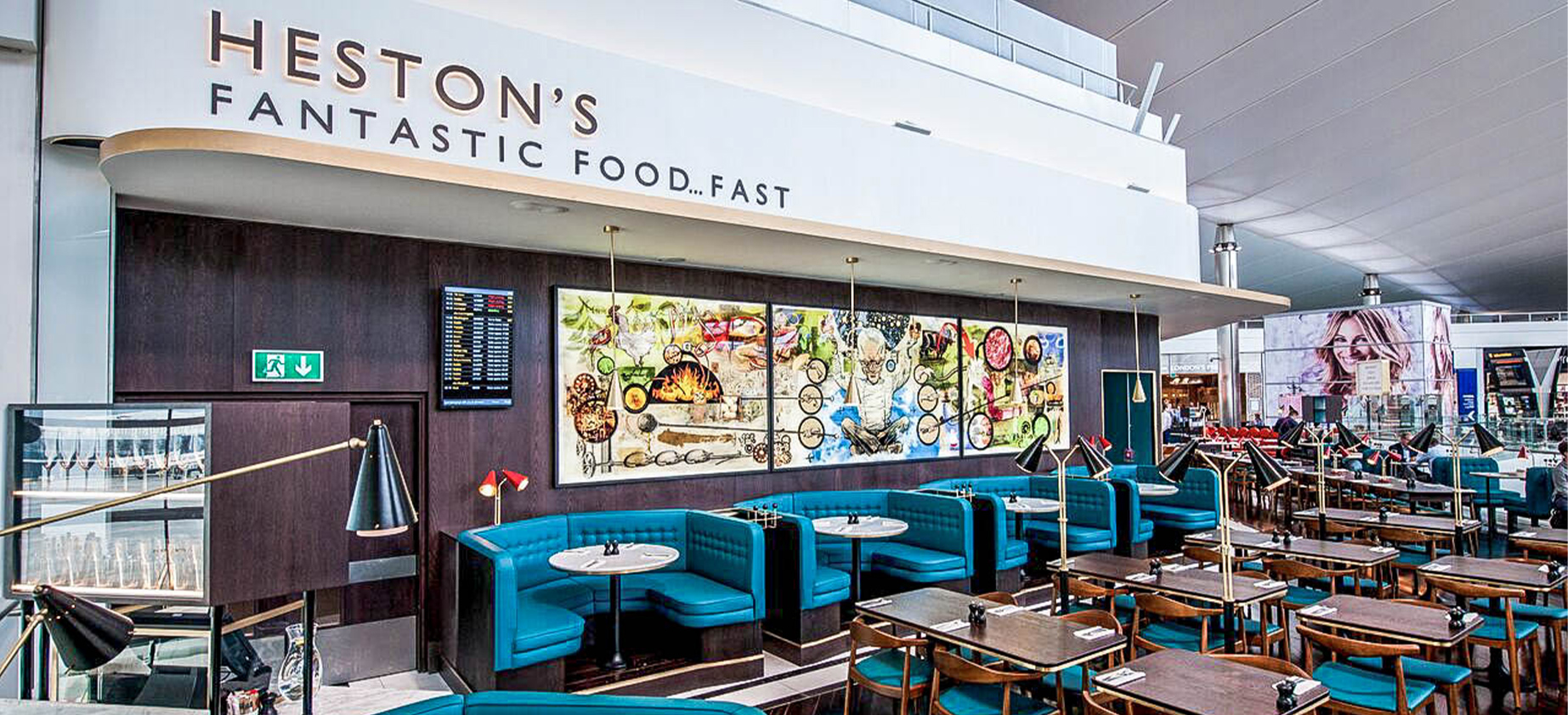For many years, one of the nicest restaurants in the French capital (which isn’t exactly hurting for nice restaurants) was in something like stasis mode. Most of Train Bleu’s customers were in-the-know tourists, and they were primarily there for the breathtaking decor rather than the food, which was average at best and completely overpriced. Recently, though, respected chef and restaurateur Michel Rostang stepped into the control cab of the “Blue Train” and got the cuisine back on track. Now, all of Paris is flocking to this Belle Époque jewel of a restaurant at Gare-de-Lyon train station to enjoy the two-Michelin-starred chef’s traditional French fare.
Sieh dir diesen Beitrag auf Instagram an
Train Bleu is the latest in a long line of French train-station restaurants purchased or opened by renowned chefs. There’s L’Etoile du Nord, which Thierry Marx (another two-starred chef and a huge name in his home country) runs at Gare du Nord. And in Metz, Michel Roth (yet another two-Michelin-star winner) runs Terroirs de Lorraine. The trend will likely reach its culmination next year, when superstar chef Alain Ducasse (who holds literally dozens of Michelin stars) opens his latest restaurant at Paris’s newly redesigned Gare Montparnasse. It all started a few years ago when Éric Frechon (the three-star holder behind Paris’s Hotel Bristol) opened a brasserie called Lazare at the recently renovated train station of the same name. “I was really skeptical at first,” Frechon recalls. “I’d always thought of Saint-Lazare train station as cold, impersonal, and depressing. But the renovation changed everything, gave it a friendly and inviting air.” Of course, he adds, train stations create a special set of circumstances that require some getting used to. “The trickiest part is probably the balancing act between travelers, who are often in a hurry, and non-travelers, who are trying to go out and have a relaxing evening,” Frechon says. The location also requires specific business hours—in this case, 7:30 AM to midnight—which creates staffing problems, because it’s basically impossible to schedule in a full team for that whole period. Lazare’s workaround is to have two separate menus: one for lunch and dinner rushes, another for other times. “You need people who are fast and can handle peak-traffic periods, but that are also creative and have high standards… And there aren’t a lot of people like that out there,” the chef explains.
There are other location-specific issues, too: Paris’s particularly strict safety regulations, for example, dictate that deliveries can only be made at specific set times. And once in a while, someone leaves a piece of luggage behind, and the entire train station (restaurant included) has to be evacuated within minutes. Or how about when the restaurant gets overrun by a crush of stranded travelers thanks to one of Paris’s not-infrequent train strikes? But despite all these hurdles, Lazare still serves around 600 meals per day, and Frechon’s business plan seems to be a real success… which is doubly good news for him, since he also owns and helped finance the project. “The property itself remains under the ownership of the train station,” he says. “So unfortunately, we don’t have any type of guarantee that our leasehold will be renewed once the contract expires.” Eric Roth’s in a slightly different boat: the two-starred chef’s hometown of Metz approached him with the restaurant idea, offering him a portion of the earnings in exchange for handling concept and execution. The rest of the staff is paid through the train station’s catering operations. “That saves me from any kind of financial risk, of course,” Roth says. “On the other hand, it meant putting my name and image, and that of my kitchen, on the line.”

Image: Lazare
He also has to meet the train station’s specific requirements, such as making sure at least 30% of the products he uses are from the region of Lorraine. They wanted the chef to be a “regional product” as well, or at least have ties to the area, which made Roth (a native Lorrainer) a perfect fit. Whereas Roth and Frechon were both brought in by the French Rail subsidiary Gares & Connexions to start new restaurants, Michel Rostang had to apply to become the new leaseholder for the long-established, prestigious Train Bleu. “The restaurant has a venerable history that we obviously want to honor and remain true to,” Rostang explains, “but of course we want to improve on parts of it as well, and keep up with the times… Train Bleu isn’t supposed to be a museum.” Two names will be added to the list of Michelin-starred train station chefs next year: besides Alain Ducasse’s project at Gare Montparnasse, three-star chef Christian Le Squer will be opening a new place at Rennes Station in his home region of Brittany. Gares & Connexions doesn’t plan to stop at France, either: they’re already scoping out possible locations at stations in Shanghai, Beijing, and Jiddah (Saudi Arabia)… not to mention in Dubai, which will be hosting the World’s Fair in 2020. No chefs are officially linked to those projects, though. Elsewhere in the world, one name worth mentioning is Claus Meyer’s—the noma cofounder’s set up shop in New York’s Grand Central Station with his Great Northern Food Hall. Several other big names in the restaurant world have instead turned to airports… where, obviously, the only customers are travelers. Two British three-star holders have opened restaurants at London’s Heathrow Airport: Gordon Ramsay’s Plane Food is in one terminal, Heston Blumenthal’s The Perfectionists’ Cafe is in another.

The Perfectionists’ Cafe | Image: Tom Osborne
Wolfgang Puck, a native Austrian who now calls America his home, has locations in at least two dozen airports throughout the US and Asia. And then there’s Tim Mälzer’s Hausmann’s in Dusseldorf and Frankfurt, Munich fine-foods retailer Michael Käfer in Munich and Frankfurt, and Jamie Oliver, the British chef whose restaurant chain is popping up at one airport after another. Daniel Wailand, who manages dining spaces at Vienna’s Schwechat Airport, explains that instead of charging rent, they take around twenty percent of the revenue. Wailand admits that earnings can vary widely from month to month, depending on the size of the business, but they have a kind of safety net in place to ensure that, even if the leasing restaurant doesn’t reach its own income targets, the airport will still bring in enough money. Logically, of course, it follows that the terms of the lease itself are a matter of negotiation, at least at Vienna Airport. French Rail is hoping to draw even more exceptional chefs to the train stations, and thus even more sophisticated customers. “Our goal is to cover the largest possible spectrum,” Antoine Nougarède, Gares & Connexions Director, told the French trade magazine Atabula. “We’ll need bistros that can serve as many customers as possible, as well as a certain type of haute cuisine that can boost the overall image of train station gastronomy.” A few more Michelin stars in their sky would obviously be particularly useful in that regard, the manager adds. Judging by how many culinary superstars have joined the railway buffet adventure in recent years, it doesn’t sound like he’ll be waiting much longer.
















